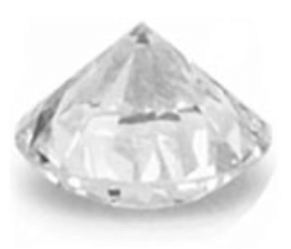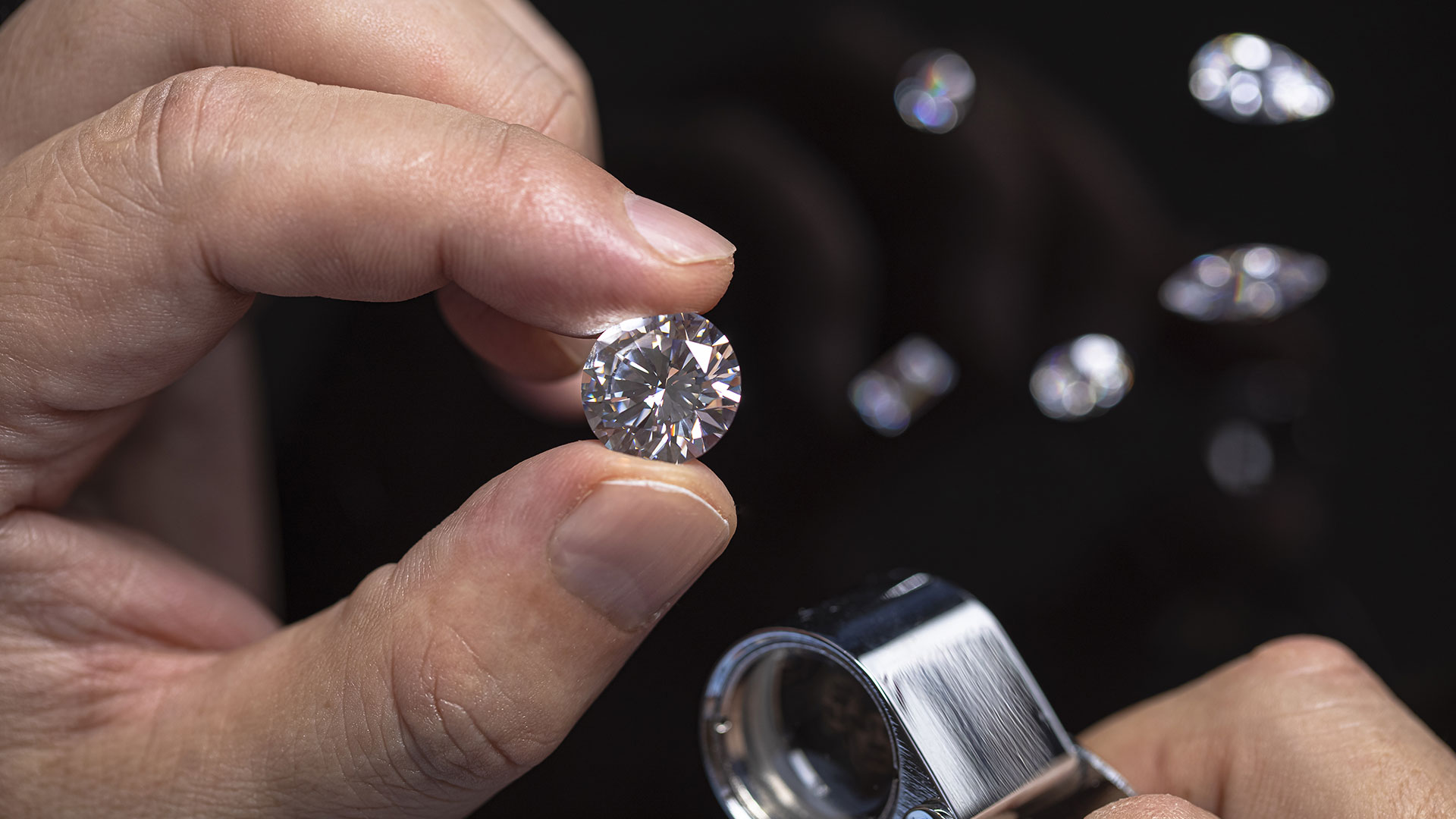

Sign up to begin your Journey with a MOH

The top graded diamonds in the world are transparent, completely colourless with not a slightest hue shimmer. A diamond’s colour is one of its most significant characteristics, enlisted as a fundamental measure of quality which are the 4 C’s of diamonds; cut, colour, clarity and carat weight. Experts consider colour to be the second most important factor in overall appearance of a diamond, the first being its cut. This consideration is based on the finding that a human eye catches the sparkle of the diamond before detecting the colour or hue. The purest diamonds appear to be white which is standardised tint of a transparent diamond which has a colourless light reflection.
You would see diamonds with hue, pale, yellowish or at times pinkish and bluish. These diamonds are usually sold as fancy diamonds. An expert would tell you otherwise, a high quality and the most beautiful diamond is the transparent one. Highest quality diamond stones have no hue in their sparkle and that is their classic splendour, admired for ages. A tinted reflection from a diamond is taken as substantial impurity or the gemstone’s imperfection. White diamonds are graded from D (colourless) to Z (light yellow), a classification scale created by the Gemological Institute of America.
Diamond colour, in terms of grading, is determined by the lack of colour in a diamond. The less colour a diamond has, the higher the colour grade. Diamond colour subtly distracts the eye from seeing sparkle, so colourless diamonds will appear to sparkle more than yellowish or brownish tinted diamonds.
Diamonds are ranked on the colour grade scale which is a standard measure of quality set by the internationally acclaimed gemstone examination labs. A diamond’s ranking on the colour scale deteriorates as the level of detectable colour tint increases. The scale follows the top down grading with the most transparent and hue free diamond ranked as the highest quality. By the standardised classification the most perfect diamond that is the one completely colourless reflections, is ranked as D on the diamonds colour grading scale. The poorest quality diamond with the darkest hue visibility is graded as Z. Generally the tint is pale shade or yellowish, graded as Z if visible in the gemstone body as a whole. Thus, the diamonds colour grading scale ranges from D to Z in the alphabetical order with descending transparency ranks. The scale grading is usually based on comparison method of quality testing. The test stone is set is comparison with a standard set or commonly referred to as the master set of diamonds. A professional with expertise in gemstones examination and colour comparison examines the test stone and determines its rank or category on the diamonds colour grading scale
Given below is the list of diamonds colour grading scale ranks allotted by standard to different diamonds. Remember that a diamond’s ranking on colour grading scale improves with a lack of colour manifestation in it. Diamond colour is graded by evaluating the body colour of the diamond on a pure white background, face down



This colour chart shows how the colour of a diamond changes visually across the scale. The GIA (Gemological Institute of America) has standardised diamond colour grading on a D-to-Z scale.
In the colour grading scale, D is the highest colour and Z is the lowest. This colour chart shows how the colour of a diamond changes visually across the scale.
D diamonds are categorically colourless, the rarest gemstones to exist.Diamonds in this range have no colour, or very minute traces of colour, that can only be identified by trained gemologists. They typically need to be compared to higher or lower graded diamonds to accurately identify the colour
The E - F range is the second highest quality range of diamonds while examining their transparency. These diamonds are colourless. These are rare diamonds and the very slight requires professional expertise to detect any dim tone.
The diamonds classified in the H-G range on the colours scale are almost completely hue free. The tint is detectable for experts with a keen eye
Going in descending order the diamonds in this colour range have trivial hue. The tint is very ignorable.
This is the second lowest range on the colour grading scale. The hue is lighter than the Z-N range but it is still very noticeable
The diamonds classified in this range on the colour scale have noticeable tint, usually seen as yellowish or pale.
The diamond colour evaluation of most gem-quality diamonds is based on the absence of colour. A chemically pure and structurally perfect diamond has no hue, like a drop of pure water, and consequently, a higher value. GIA’s D-to-Z diamond colour-grading system measures the degree of colourlessness by comparing a stone under controlled lighting and precise viewing conditions to masterstonesof established colour value.

D colour diamond possesses the highest colour purity and is a symbol of perfection. It is considered extremely rare and has no recognisable shades of colour. When looking at a diamond with the naked eye, E and F colours can also look similar to the D colour diamond
E colour diamond is visually stunning and has very high colour purity. It is incredibly rare and has almost no recognisable colour shading. To the naked eye and even under 10X magnification, an E colour diamond will not show any tinges of yellow colou


F colour diamond has excellent beauty and contains a minute shade of colour that is undetectable by the untrained eye. It is also very rare and considered to have high colour purity.These are rare diamonds and the very slight requires professional expertise to detect any dim tone.
The diamonds classified in the G colour range on the colours scale are almost completely hue free. The tint is detectable for experts with a keen eye. It is also the most popular diamond colour and provides a great blend of beauty and value


H colour diamond is one of the most popular colour because of its visual attractiveness and value. It has gorgeous appeal as its slightly identifiable shade of colour does not affect the diamond’s brilliance.
I colour diamond is still not recognisable to an untrained eye and provides excellent value. Depending on the diamond, an I diamond can be a good choice as the yellow colour is not too perceptible. The tint is very ignorable.


Going in descending order the diamonds in J colour range have trivial hue. These diamonds have a slight yellow tint that’s usually only visible when they’re viewed next to diamonds of a higher colour grade.
K colour diamond that does not compromise the sparkle. This is the second lowest range on the colour grading scale. The hue is lighter than the Z-N range but it is still very noticeable.


L colour diamonds have a yellow tint that’s visible to the naked eye in normal lighting conditions. Diamonds with this colour grade are much more affordable than those in the G to J range, making them a good value for money option